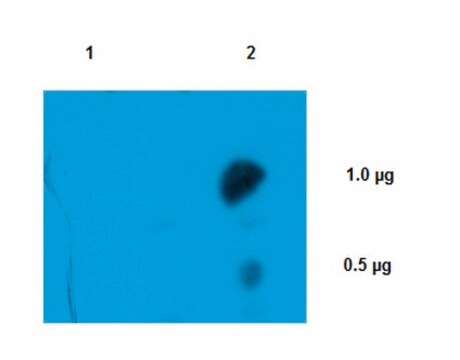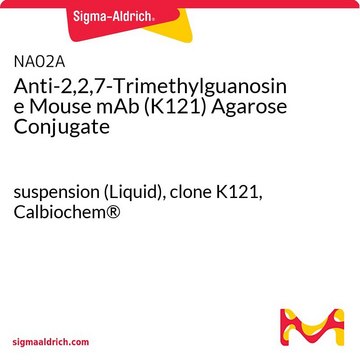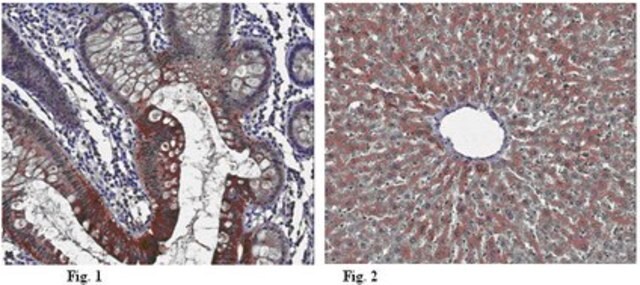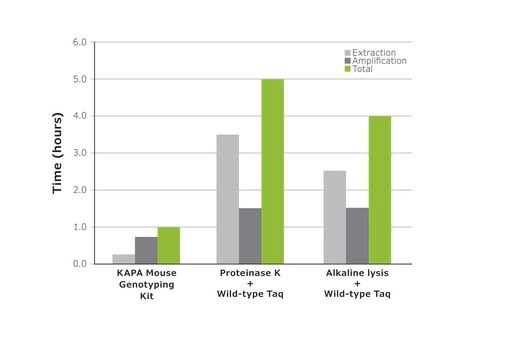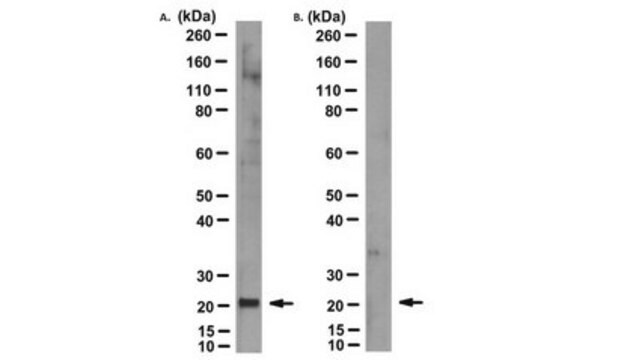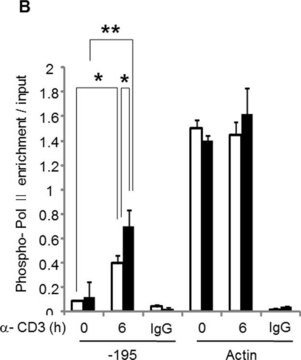MABE302
Anti-2,2,7-Trimethylguanosine Antibody, clone K121
clone K121, from mouse
About This Item
Productos recomendados
biological source
mouse
Quality Level
antibody form
purified immunoglobulin
antibody product type
primary antibodies
clone
K121, monoclonal
species reactivity
human, mouse
technique(s)
affinity chromatography: suitable
immunocytochemistry: suitable
immunoprecipitation (IP): suitable
isotype
IgG1κ
shipped in
wet ice
target post-translational modification
unmodified
General description
Application
Immunoprecipitation Analysis: A representative lot from an independent laboratory was immunoprecipitated in IP (Moketi, S., et al. (2002). Mol Cell. 10(3):599-609.).
Quality
Immunocytochemistry Analysis: A 1:500 dilution of this antibody detected 2,2,7-trimethylguanosine in NIH/3T3, HeLa, and A431 cells.
Physical form
Analysis Note
NIH/3T3, HeLa, and A431 cells
Other Notes
¿No encuentra el producto adecuado?
Pruebe nuestro Herramienta de selección de productos.
Storage Class
12 - Non Combustible Liquids
wgk_germany
WGK 1
flash_point_f
Not applicable
flash_point_c
Not applicable
Certificados de análisis (COA)
Busque Certificados de análisis (COA) introduciendo el número de lote del producto. Los números de lote se encuentran en la etiqueta del producto después de las palabras «Lot» o «Batch»
¿Ya tiene este producto?
Encuentre la documentación para los productos que ha comprado recientemente en la Biblioteca de documentos.
Nuestro equipo de científicos tiene experiencia en todas las áreas de investigación: Ciencias de la vida, Ciencia de los materiales, Síntesis química, Cromatografía, Analítica y muchas otras.
Póngase en contacto con el Servicio técnico